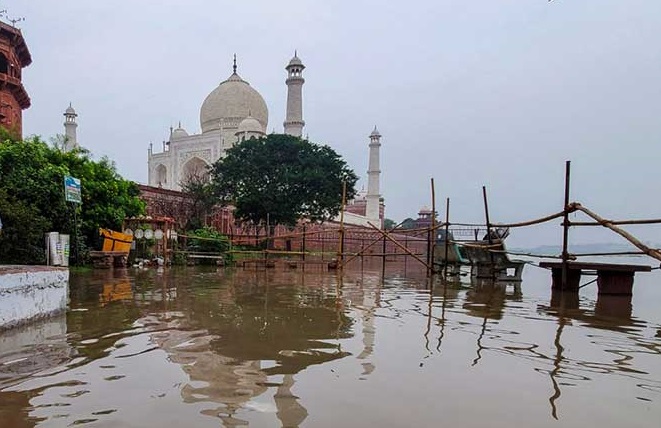Jamuna river laps walls of iconic Taj Mahal in India
Floodwaters raise concerns for majestic monument
Sun Online Desk
Published: 19 Jul 2023

India has been hit by heavy monsoon rains, resulting in a rising death toll of more than 150 people. Amid the devastation, another alarming consequence has occurred – the waters of the Jamuna River have reached the walls of the iconic Taj Mahal for the first time in 45 years.
Rapid surge in Jamuna river’s water level due to heavy rains has led to serious consequences for Agra’s iconic Taj Mahal and surrounding areas, submerging a garden located behind the majestic monument.
The Jamuna River, which flows near the Taj Mahal in the city of Agra, Uttar Pradesh, has been continuously rising due to the prolonged heavy rainfall in the region.
The last time the Jamuna approached the back wall of the Taj Mahal was during the floods of 1978.
As per reports, the water level surpassed the ‘low-flood level’ at 495 ft, reaching the ‘low-flood level’ of 497.9 feet.
The state of Himachal Pradesh has borne the brunt of the natural disaster, with 125 reported deaths and the closure of 682 roads, causing significant disruption.
The state has suffered an estimated loss of over Rs40 million as torrential rains continue to wreak havoc in various regions.
The situation has captured the attention of Indian authorities and the world as the historic monument, a UNESCO World Heritage site, faces potential risks due to rising water levels.
Indian media reported on the unusual event, citing concerns raised by experts about potential damage to the 17th-century mausoleum.
The Taj Mahal, a symbol of eternal love and an architectural marvel, attracts millions of tourists from around the world each year. Its pristine white marble facade, intricate carvings, and beautiful gardens make it one of the most recognized and cherished landmarks globally.
Reportedly, sandbags have been placed around the monument’s perimeter to create a barrier against the encroaching waters. Additionally, drainage systems have been inspected and fortified to ensure the water does not accumulate around the structure.
Source: samaaenglish.tv

